This post may contain affiliate links, please view our disclosure policy for more details.
Pasta is a popular dish that originates from Italy, though noodles of other sorts are eaten all around the world and come in a variety of different shapes and sizes.
The best part? It’s easy to serve, affordable and so versatile in how it’s prepared. Simply change the shape, the sauce, or ingredient combinations with different types of spices, vegetables, meat, and meat alternatives (like lentils or tofu). The possibilities are endless, making pasta a nutritious meal for both your baby and the entire family!
As a parent, you may have wondered about the safety of introducing pasta noodles to your little one. You might wonder which type of pasta noodles you should choose, which ones to avoid, how to serve it safely, and the list goes on.
But don’t worry, we’ll go over all of it! Let’s dive into the specifics of how we should be feeding babies pasta!
Table of Contents
For ultimate confidence in how to feed your baby from 6-12 months of age, join our Baby Led Feeding online course! This expert-led, video-based course teaches you all about starting solids with the feeding method that’s best for you and your baby. You’ll learn how to progress through a variety of textures in a timely way, prevent picky eating, serve all food safely, and raise a food-loving baby!
And now it includes our Texture Timeline™ video library! Easily search for any food and find a video for exactly how to serve it according to age and phase. We’re continuously adding to this video library, and you’ll get lifetime access to it through the course!
When can babies eat pasta noodles?
Pasta noodles can be introduced to babies when starting solids at around 6 months of age, assuming they show all the signs of readiness to start solid foods.
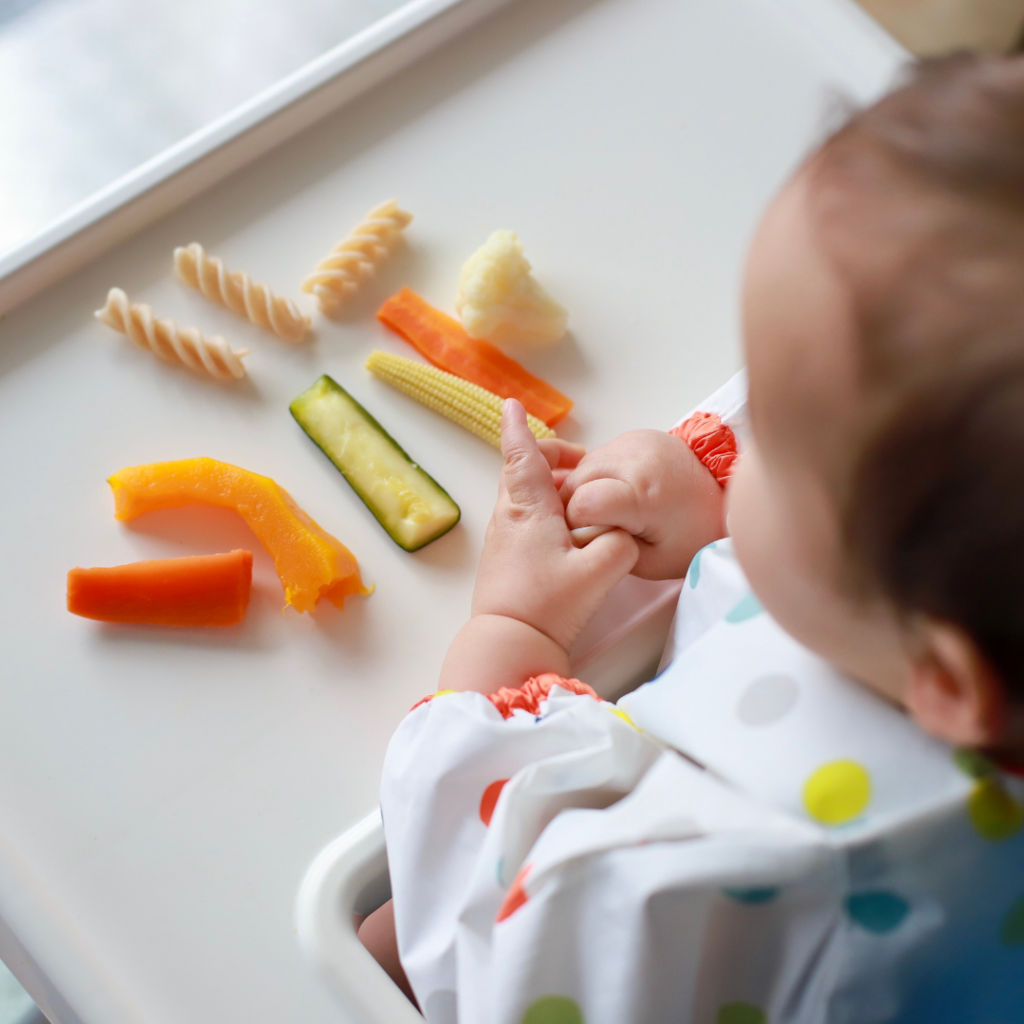
However, not all pasta shapes should be offered right at 6 months. Some just don’t work for babies in the early stages and can cause more frustration than necessary. Don’t worry – we’ll break it all down for you below with a list of which shapes to serve at which age. Keep reading!
How to serve various pasta shapes for BLW
With so many options available, we encourage you to switch up not only the pasta shape but also the types of pasta you offer, as mentioned above.
Try to include different varieties like egg noodles and pulse-based pasta noodles for added nutrition. Try offering colorful pasta, mixed or various shapes for different texture experiences, and use various sauces, spices, etc. to change up the flavor. Exposure to variety is key!
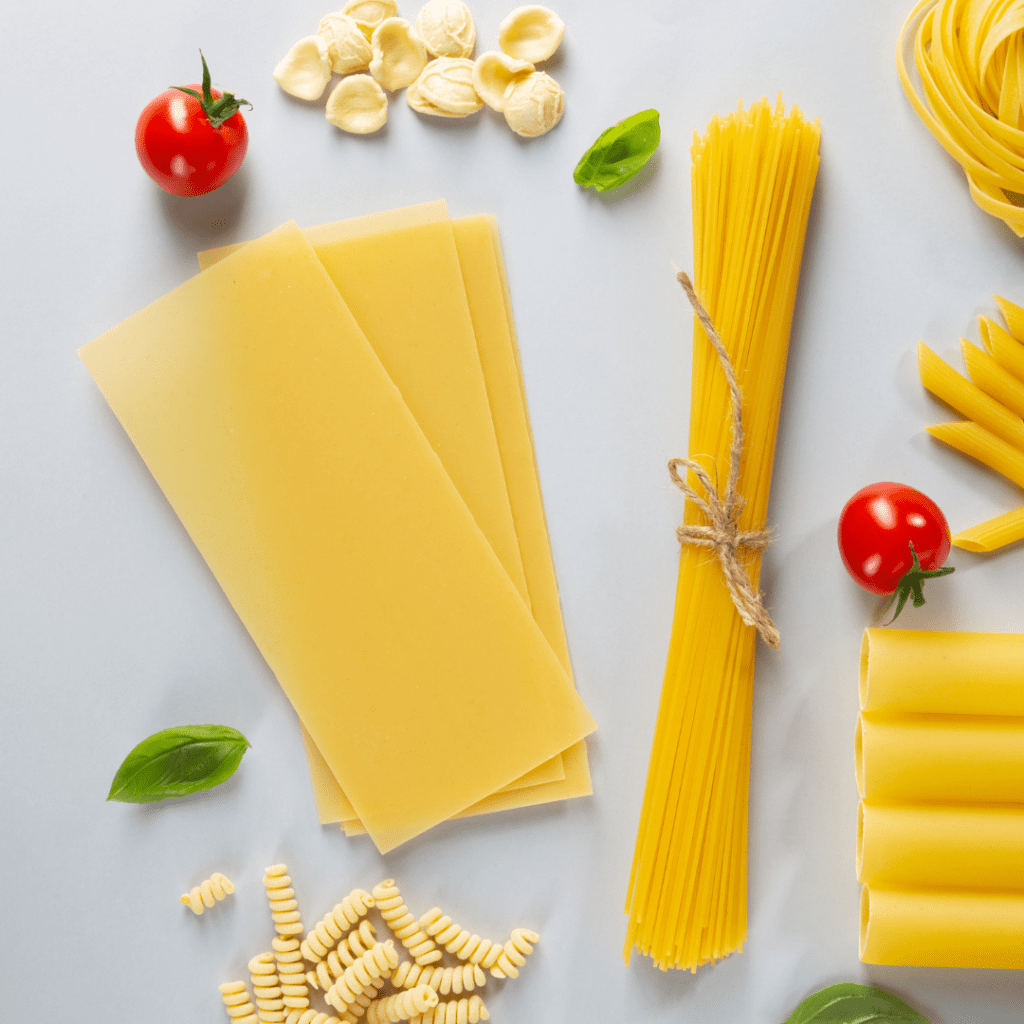
Pasta noodle shapes for palmar grasp
Bigger is often better for babies who are just starting solids! Most pasta noodle shapes are safe to eat from a texture and shape perspective, but long thin noodles like spaghetti will be harder for baby to get in their mouth.
The best pasta shapes to start with, from approximately 6-8 months, include larger round or flat noodles like…
- Rotini
- Rigatoni
- Penne
- Large shells
- Lasagna (cut in ¼ with sauce and rolled up)
- Wide egg noodles
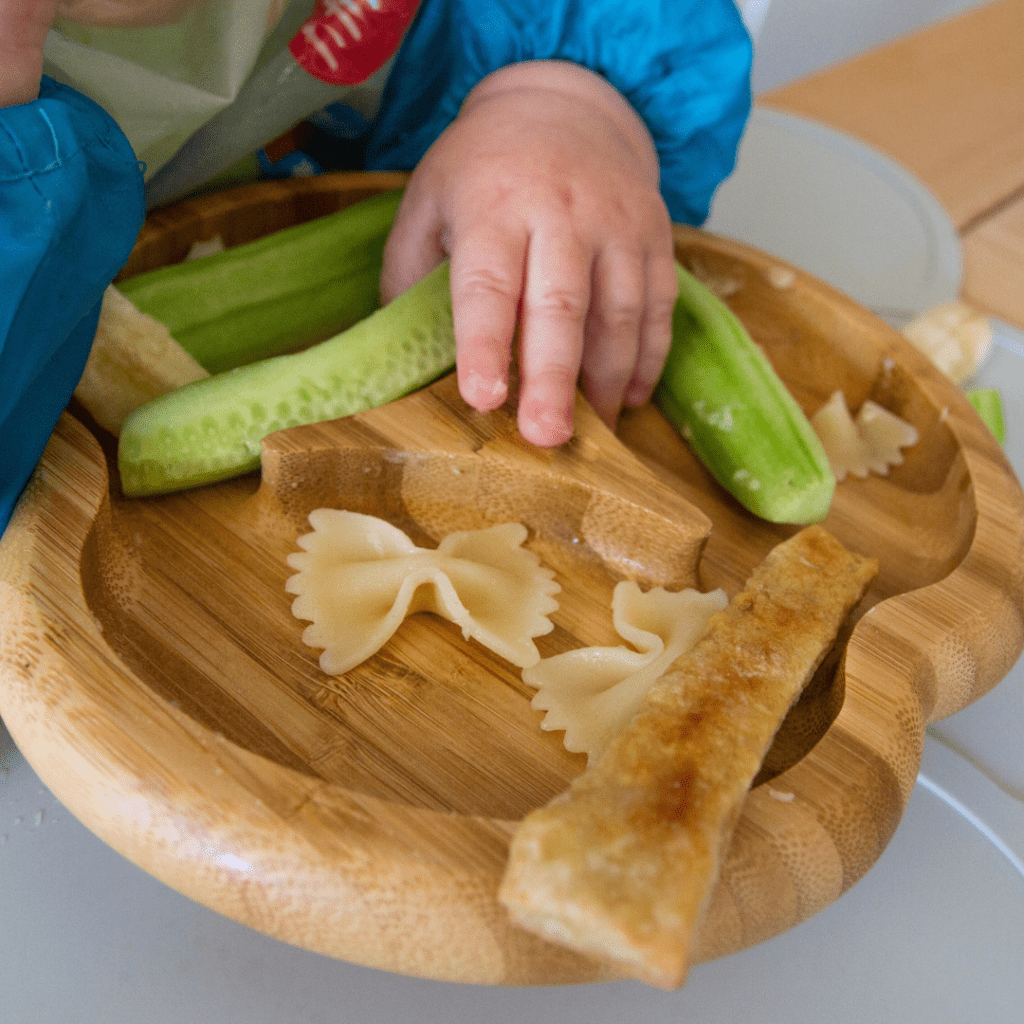
These shapes, specifically rotini, rigatoni, and penne, will be easiest for baby to hold with their palmar grasp and bring the food to their mouth to self-feed. Coat them in a bit of olive oil, tomato, marinara, or pesto to keep the pasta noodles moist and boost nutrition!
You can try serving spaghetti noodles that are clumped up and let your baby practice picking them up, but it will probably be more difficult for them to navigate getting the noodles into their mouth in the beginning.
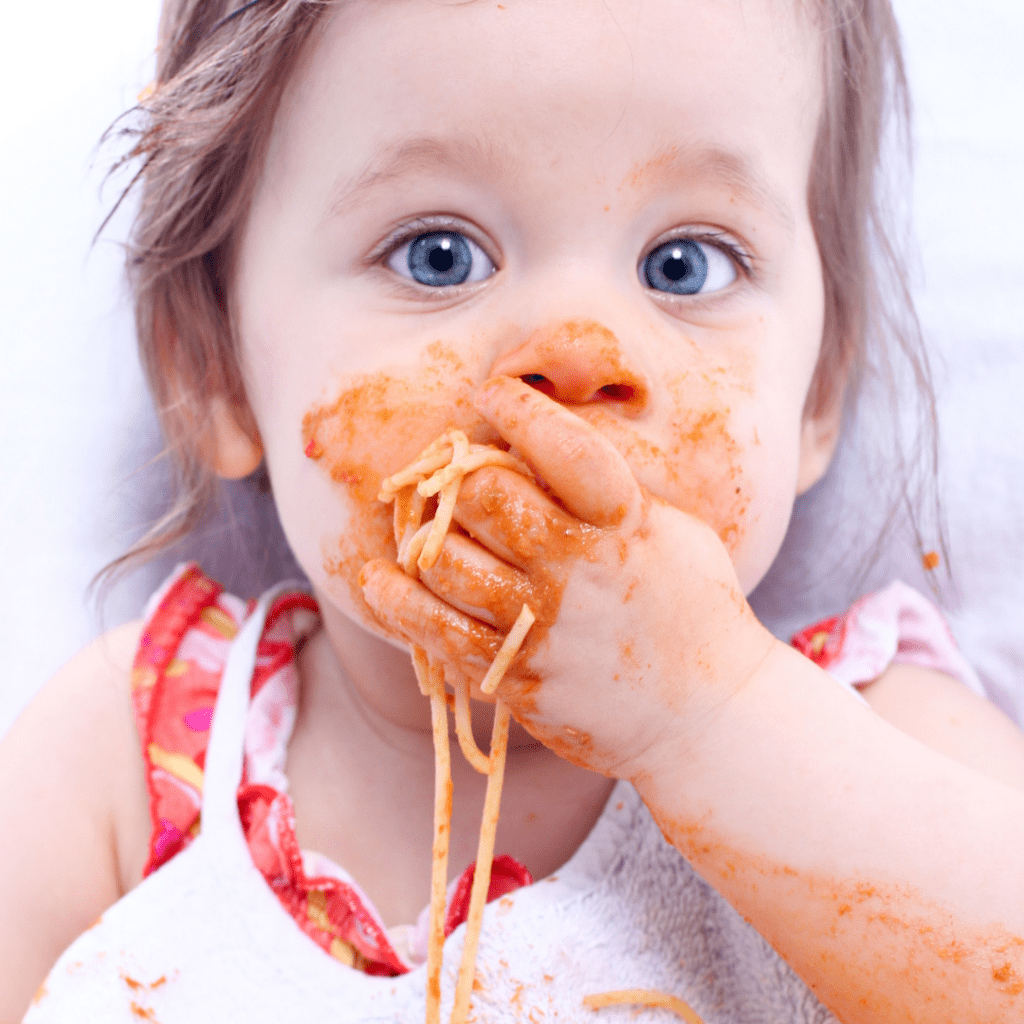
It may be easier to cut them up and stack the smaller pieces into a haystack for them to grab from using their palmar grasp. This will make it easier for your baby to actually hold on to some noodles and get them into their mouth.
Top tip: If your baby is struggling with how slippery the noodles are with sauce or oil on them, try sprinkling a bit of nutritional yeast on top for a better grip (and added nutrition!).
Pasta noodle shapes for pincer grasp
Once your baby has developed their pincer grasp, around 8 to 9 months of age, you can start offering new pasta shapes like…
- Spaghetti
- Macaroni
- Orzo
- Gnocchi, and more!
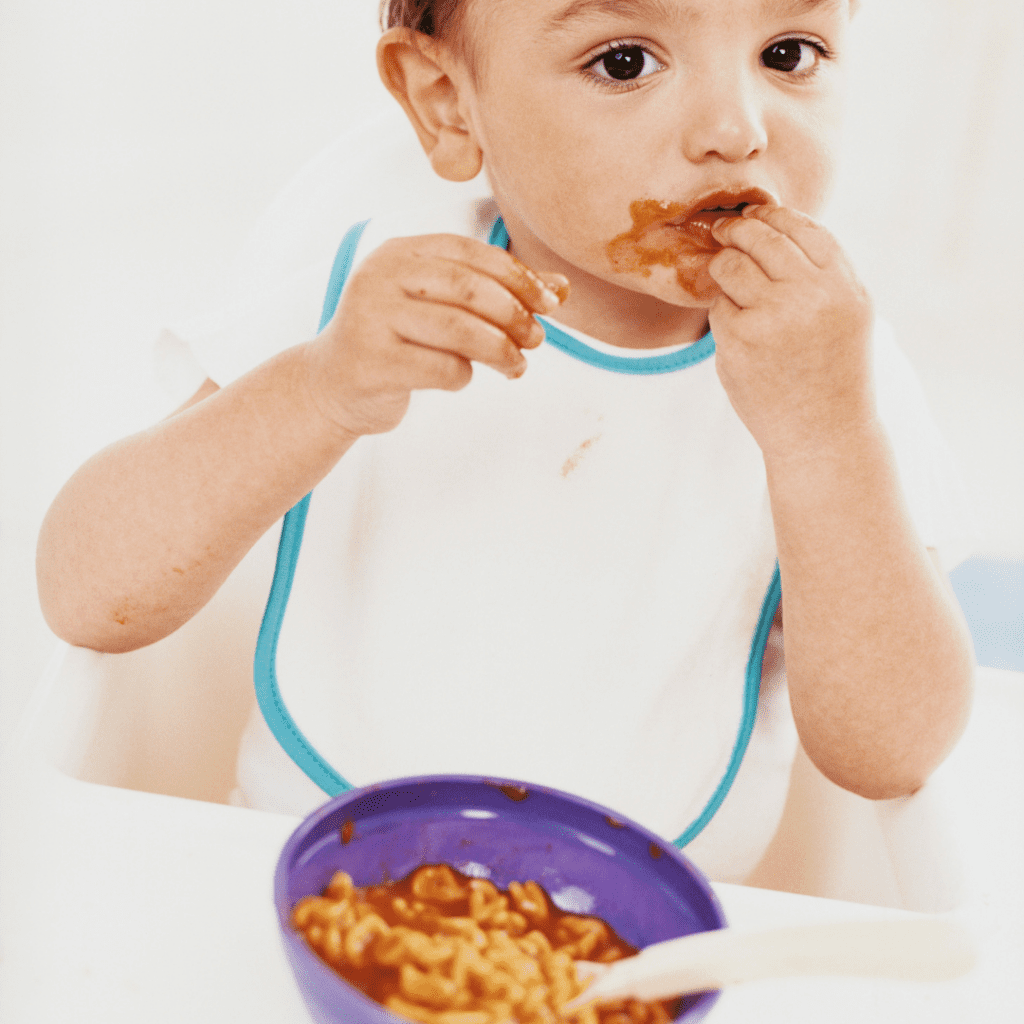
They can practice picking them up between their index finger and thumb and bringing them to their mouth. However, you can and should still offer other pasta shapes like rotini, rigatoni, penne, lasagna, etc. You can modify them by cutting them into smaller bite-sized pieces so baby can continue to practice using their pincer grasp, or offer them as they are for continued practice and variety.
Top tip: As we know, pasta with sauce can be slippery and might make these small noodles even harder for your baby to pick up. If so, you can try serving sauce on the side and let them dip the plain pasta in the sauce instead!
Can pasta be a choking hazard for babies?
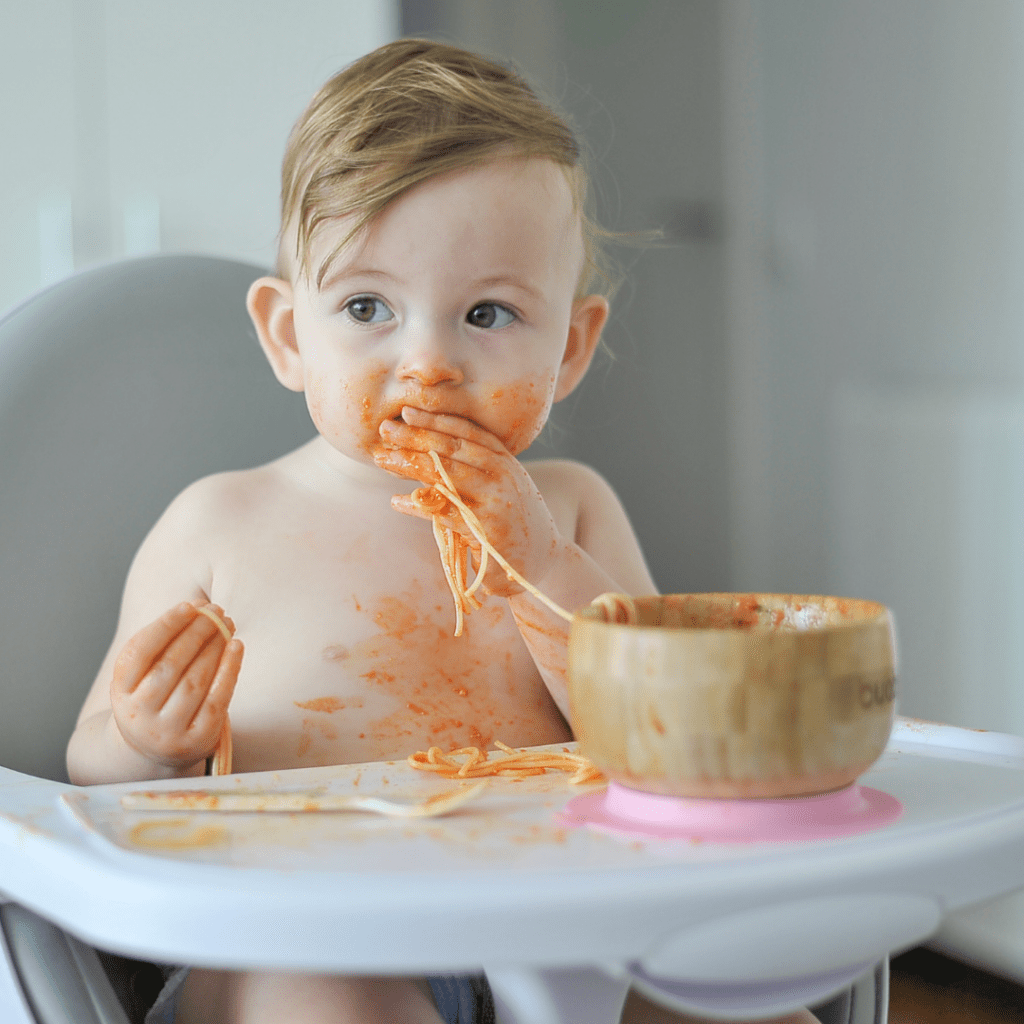
Pasta noodles aren’t considered to be a common choking hazard for babies. Once cooked, they become soft and easily squishable between your baby’s strong gums. However, pasta noodles can cause babies to gag quite a bit, so to make it easier for baby to swallow, serve them with sauce or a drizzle of olive oil instead of plain.
Always ensure you’re offering baby appropriate foods based on their skill level and ability to chew their food thoroughly. Our signature Texture Timeline™ found in the Baby Led Feeding online course will help you determine what is safest for your baby.
How to cook pasta noodles safely for baby
When cooking pasta noodles for your baby, it’s important to achieve the right texture so that it’s not too gummy or undercooked to ensure it’s safe. So, how long should you cook pasta to get the perfect texture? Well, there isn’t one simple answer and the process will involve some taste testing!
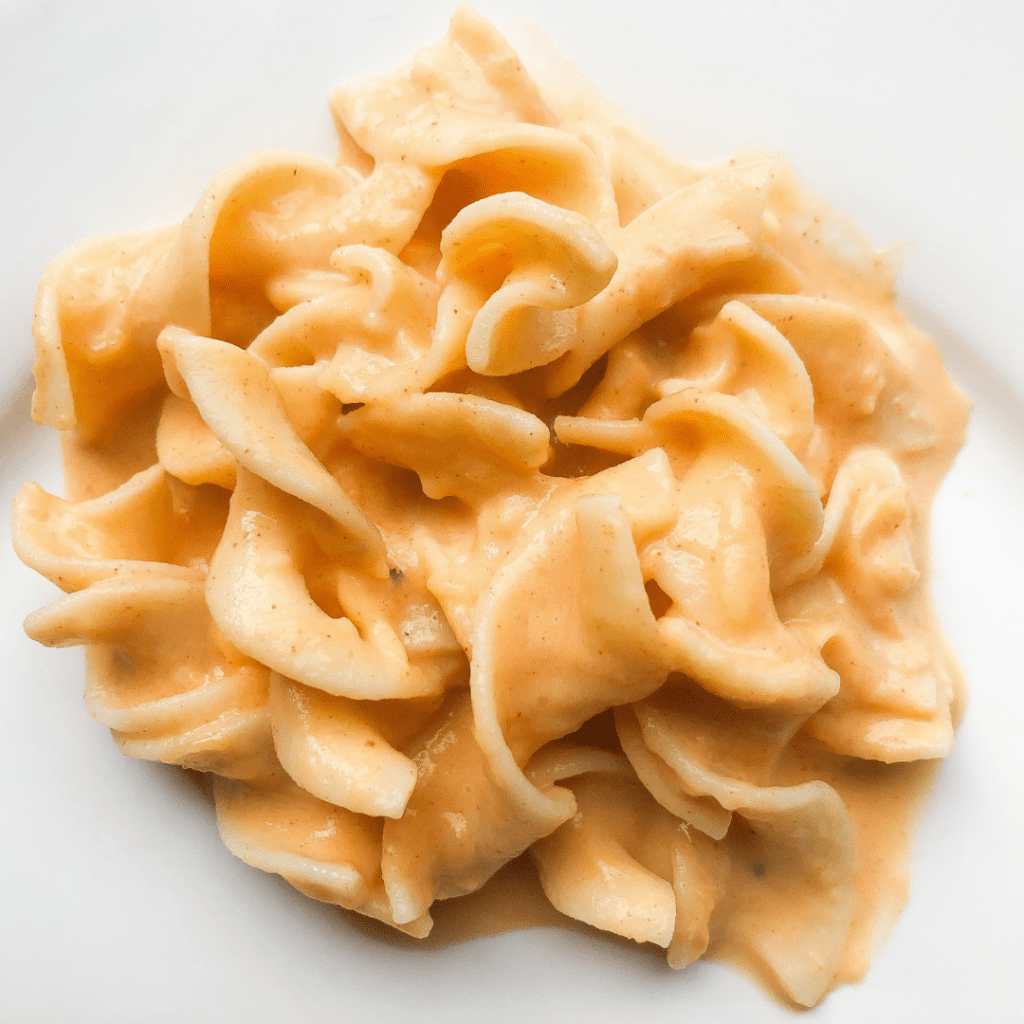
Follow these steps when cooking your baby pasta (1):
- Choose a pot that is big enough to allow the pasta noodles to “swim” freely while cooking. Follow the package instructions for water-to-pasta ratios.
- Once the water comes to a boil, add a pinch of salt (avoid adding oil to pasta water as it will make the noodles slippery, and the sauce may not stick as well).
- Add pasta noodles to the boiling water and give it a good stir to ensure all the pieces of pasta are separated. When the water comes to a second full boil, you can start your timer.
- If no time is given on the pasta package, follow these rules of thumb, but be careful to check the pasta often for doneness as it cooks:
– Fresh pasta: 3 to 5 minutes.
– Thin, dried durum wheat pasta (like spaghettini, shells, rotini): 6 to 9 minutes.
– Dried spaghetti: generally 8 to 9 minutes, depending on the brand and thickness.
– Thick dried durum wheat pasta (like penne): 12 to 15 minutes. - A minute before the estimated pasta cooking time is up, remove a piece of the pasta to check for doneness. You want either an al dente (soft exterior, slightly dense interior) texture or slightly softer. You don’t want soft, limp pasta. Bite the pasta to check. If you see a thin white line or white dot(s) in the middle of the pasta, it’s not done yet.
- Let the pasta noodles cook for one minute longer and test again. Repeat until you reach the desired texture.
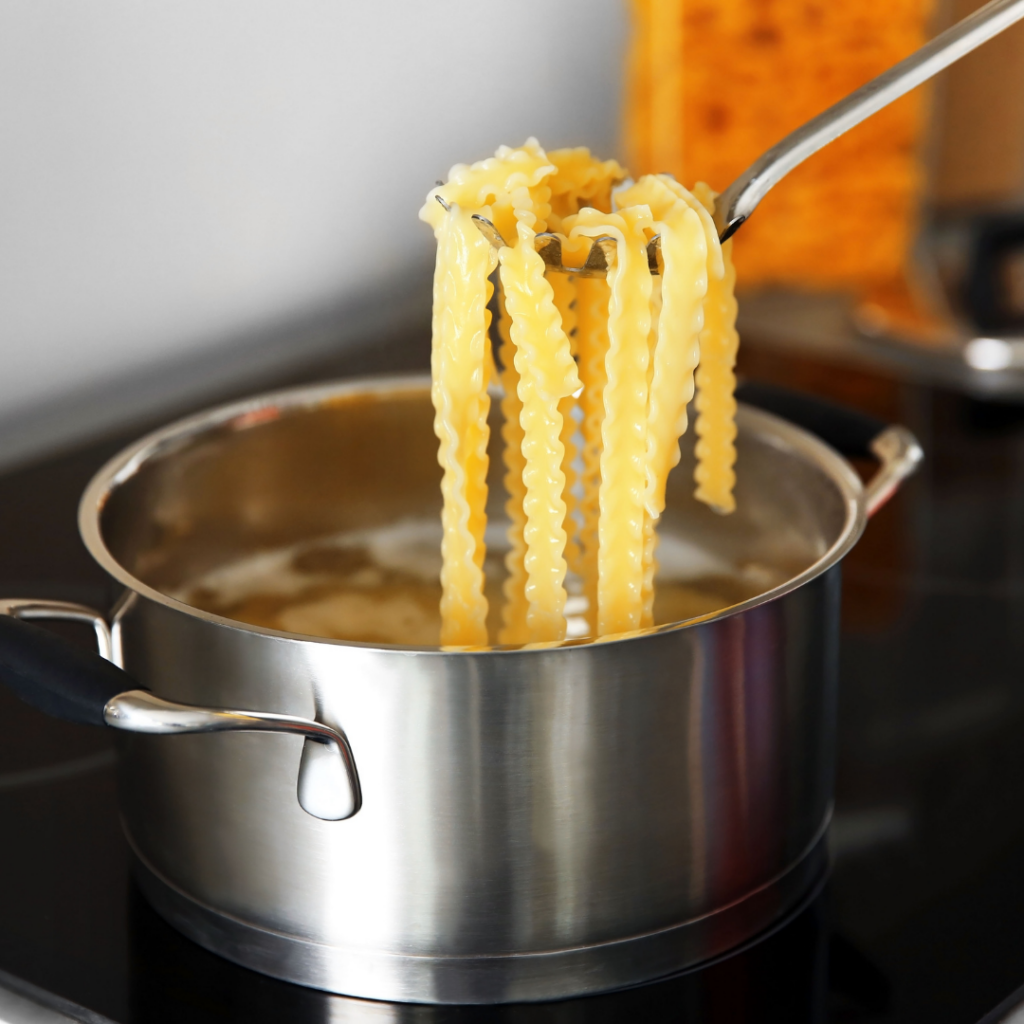
Top reasons to serve pasta to babies
Introducing top allergens
You can start serving highly allergenic foods regularly to your baby around 6 months (or sooner if they’re high risk). It’s important to introduce top allergens as early as possible and continue to offer them in the diet often – and wheat is considered a top allergen!
When introducing a top allergen such as pasta noodles to your baby for the first time, make sure to only offer one allergenic food at a time, and wait a 2-day stretch before introducing a new highly allergenic food. Since some varieties of pasta noodles contain both wheat and egg, we recommend first ruling out the possibility of one of these allergens, before offering pasta noodles as a way to introduce the other allergen.
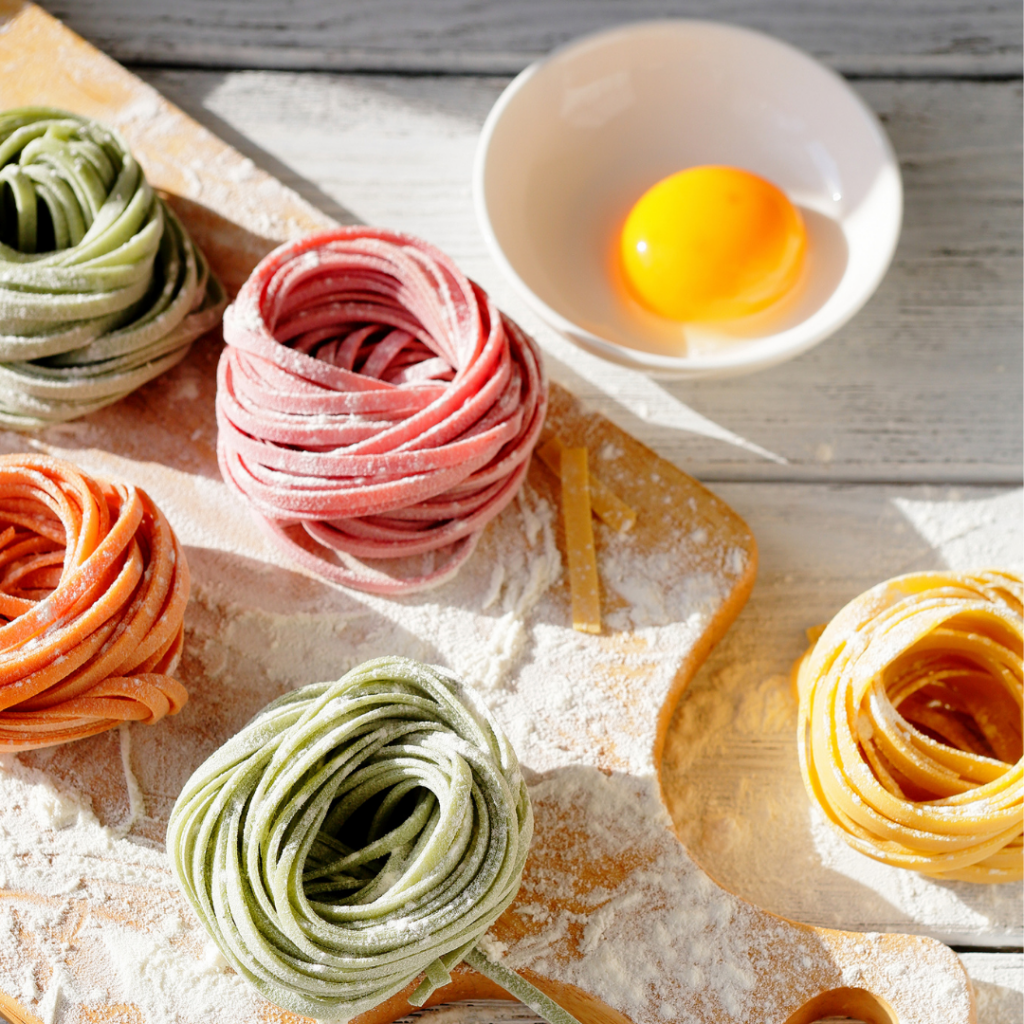
Note: This doesn’t mean you can’t introduce other non-highly allergenic foods during those 2 days. Learn more about why you don’t need to follow the “3-day wait rule” for non-highly allergenic foods.
And remember, as you rule out top allergens, it’s important to keep offering them alongside other foods as well to lower the risk of food allergies developing later on. If there is no reaction, continue to feed the top allergenic foods at least 2-3x a week as you continue to introduce other foods.
Since pasta noodles are so versatile, it’s an easy food to serve multiple times a week. Simply changing the shape, sauce, or sides will ensure your baby is getting lots of variety while still being exposed to the allergen regularly.
Increasing variety
Babies NEED exposure to a variety of foods early on and with so many different colors and shapes of pasta noodles available to choose from, it’s an easy way to add ample variety to baby’s meals!
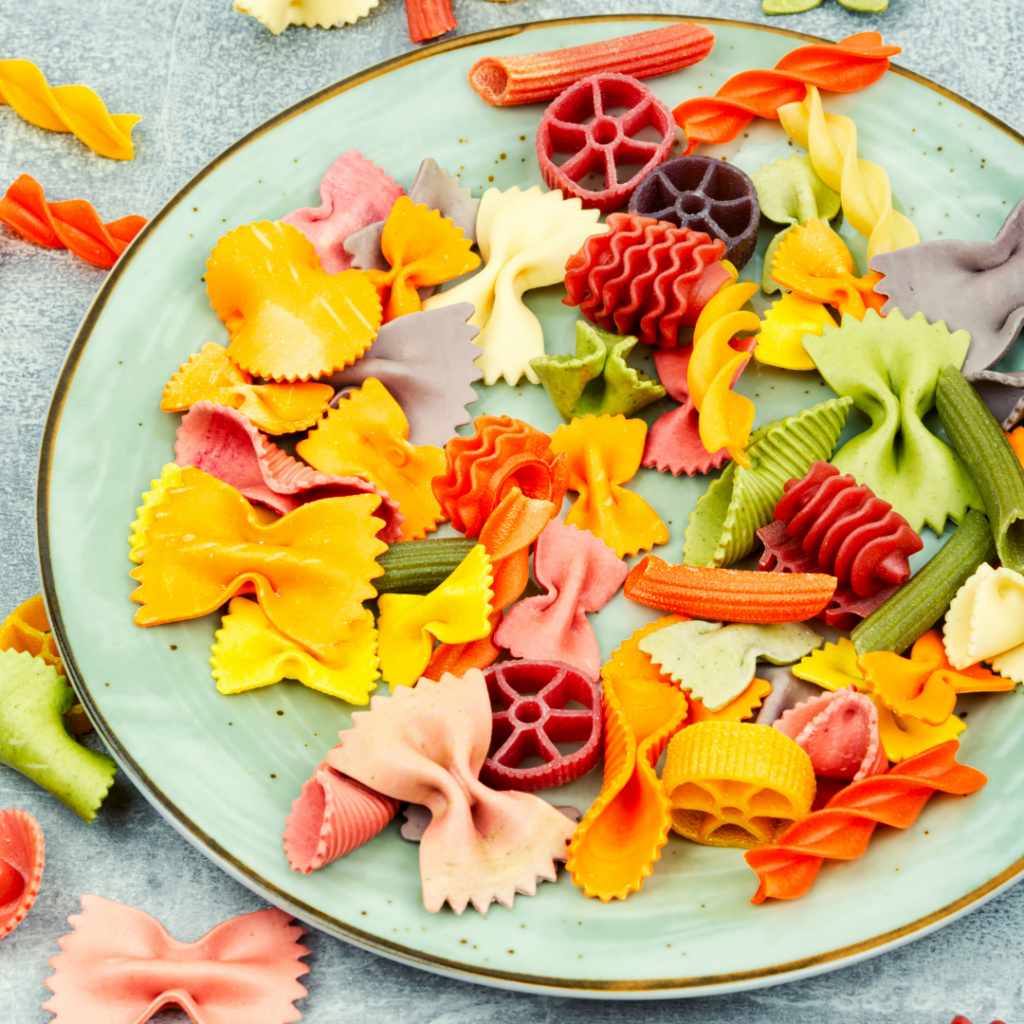
We need to introduce as many different foods (flavors and textures) as possible during the critical period between 6-9 months of age, while baby is developing taste and texture preferences (2). The more exposure a baby has to different foods during this period of time, the more likely they’ll accept these foods long-term and more easily learn the skills to eat them.
Changing up the shape or color of pasta noodles is an easy way to increase the amount of variety your baby is exposed to. Plus, changing up the types of sauce can offer additional opportunities for variety by exposing them to different flavors and textures! Once baby has some experience with smooth pasta sauces, try serving chunkier types of sauce for a new texture experience.
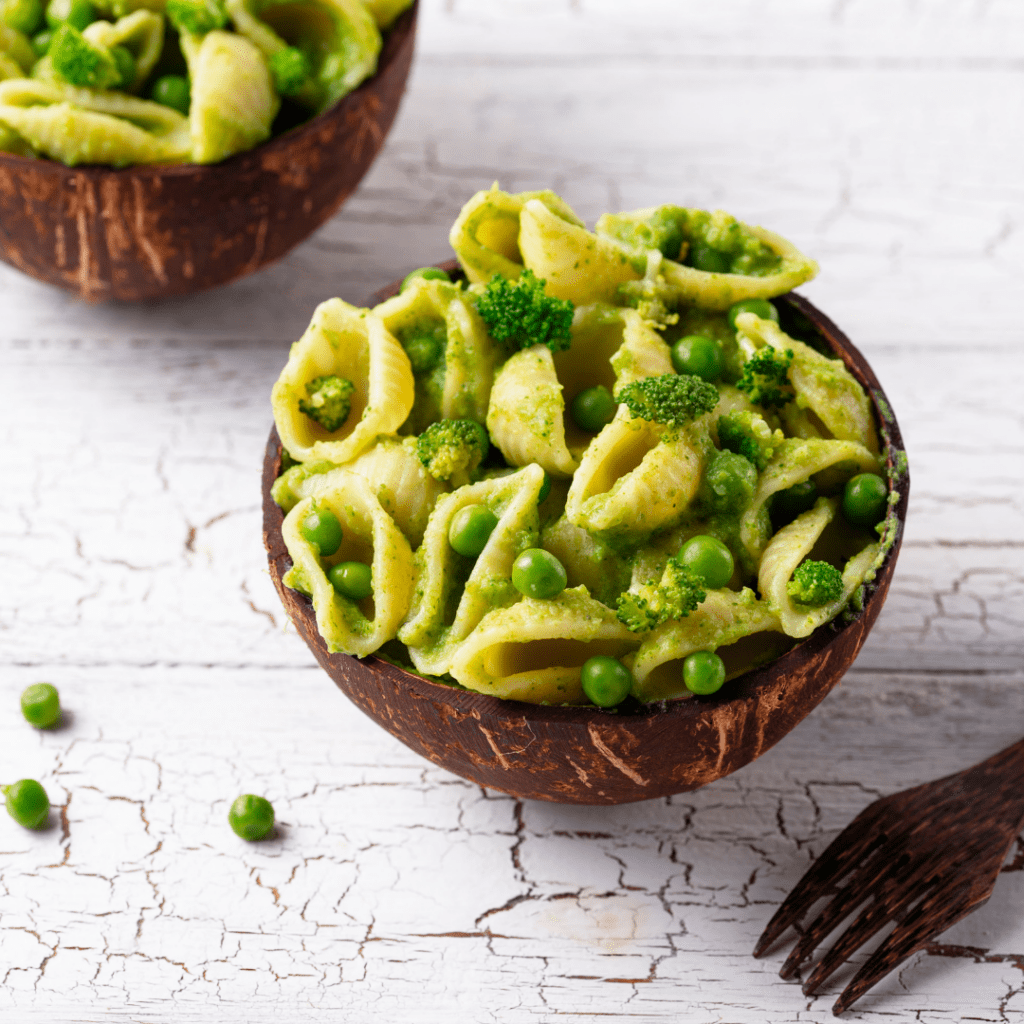
Most types of pasta noodles offer a chewy texture for baby, which can be found in phase 3 (the lifelong stage) of My Little Eater’s signature Texture Timeline™! You can use our Texture Timeline™ tool to start with easier textures of purees or finger foods and work your way up to more advanced textures at a pace that works for you and your baby.
Our Texture Timeline™ video library inside the Baby Led Feeding online course allows you to search for any food and see exactly how to serve it based on different phases (difficulty levels) of the Texture Timeline™. You get to see how your baby should be served the food based on their stage of development, and get tons of nutrition information on each food, plus allergy info, fun facts, recipes, and more! Get access to the video library below.
Boosting nutrition by pairing with various sauces
Pasta noodles make an easy vehicle for all different kinds of sauces! Pasta sauce can be used as a simple way to add nutrients to your baby’s meals while introducing them to new flavors.
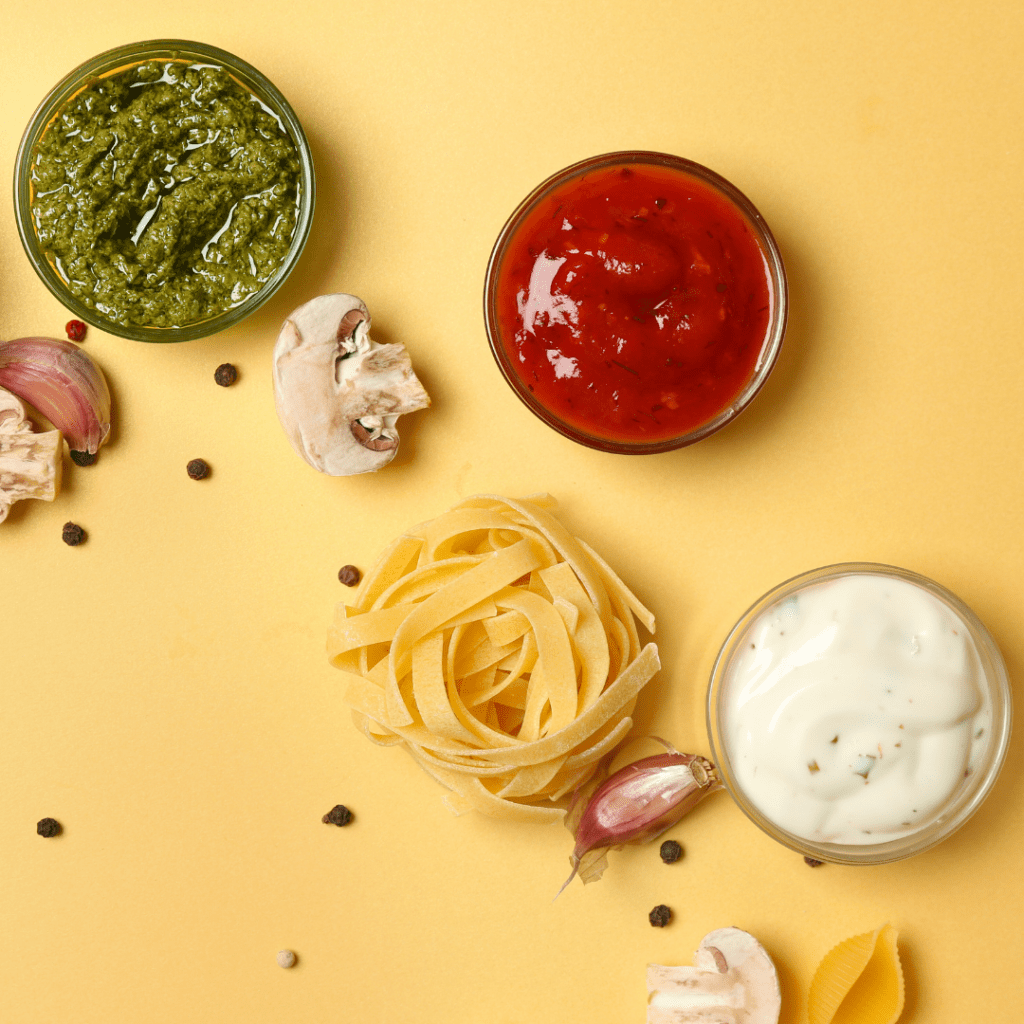
Now, when it comes to buying pre-made pasta sauces, there are some things you should look for before you buy…
- Many store-bought pasta sauces can be high in sodium, and some also contain high amounts of sugar. The recommended amount of salt for babies is about 200 mg/day from food sources. Going over the recommended amount of salt isn’t something to stress over, however, if it’s present in foods in excessive amounts, it builds up your baby or toddler’s affinity for salty foods and snacks.
- Some may contain preservatives, chemicals, and unnecessary food additives like monosodium glutamate, sodium nitrate, and benzoic acid, for example.
- Although most pasta sauces come in glass jars, there are canned options available. When buying canned products, aim to choose ones stored in a BPA-free liner and ideally, also PVC-free lining as well.
Making sauce at home is a great option if you have the time! This way you can control the amount of salt and sugar, and avoid unnecessary preservatives entirely. It can be as simple as blending up a few veggies, and voila! A nutritious pasta sauce for baby. We encourage you to add a variety of spices (basil, oregano, thyme, pepper, garlic, etc.) for baby to get exposure to different flavors.
Top tip: Make large batches of various pasta sauces (like spaghetti sauce) and freeze them! Perfect for those evenings when you need a quick and easy meal for the whole family!
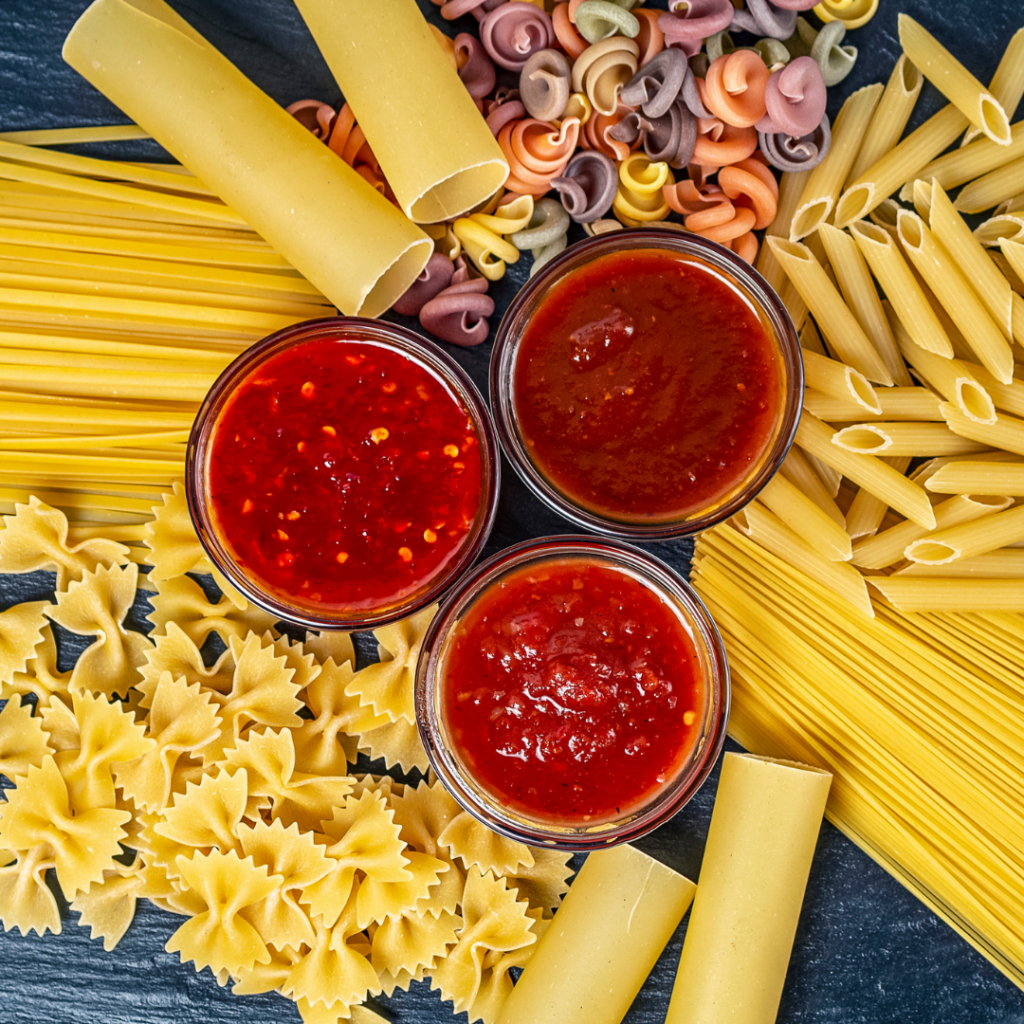
Some pasta sauces that we love, include…
- Pesto: A great way to introduce green veggies, which are typically in the category of foods kids refuse! Offer it early and often to increase the likelihood of them eating it in the future. Opt for homemade pesto if possible, as store-bought pesto is usually pretty high in sodium. At the end of this blog, you’ll find a simple, low-sodium pesto recipe perfect for the whole family!
- Marinara: Easy peasy, nutritious, and versatile. Be careful as many store-bought marinaras can be high in sodium, so if you can’t make your own at home, you can also just do plain tomato sauce!
- Olive oil: So easy, goes on top of any food, and is a great way to boost calories. You can substitute it for any other heart-healthy oil as well, like avocado or flaxseed oil!
We know that there are lots of not-as-nutritious sauces out there, some of which may have very high salt content, and it can be difficult to choose the best option! Luckily, Primal Kitchen has a huge variety of delicious, healthy alternatives to traditional sauces, condiments, and dips! All ingredients used are whole foods based, and with no added sugar, you can’t go wrong. Use code MYLITTLEEATER to get 10% off your purchase!
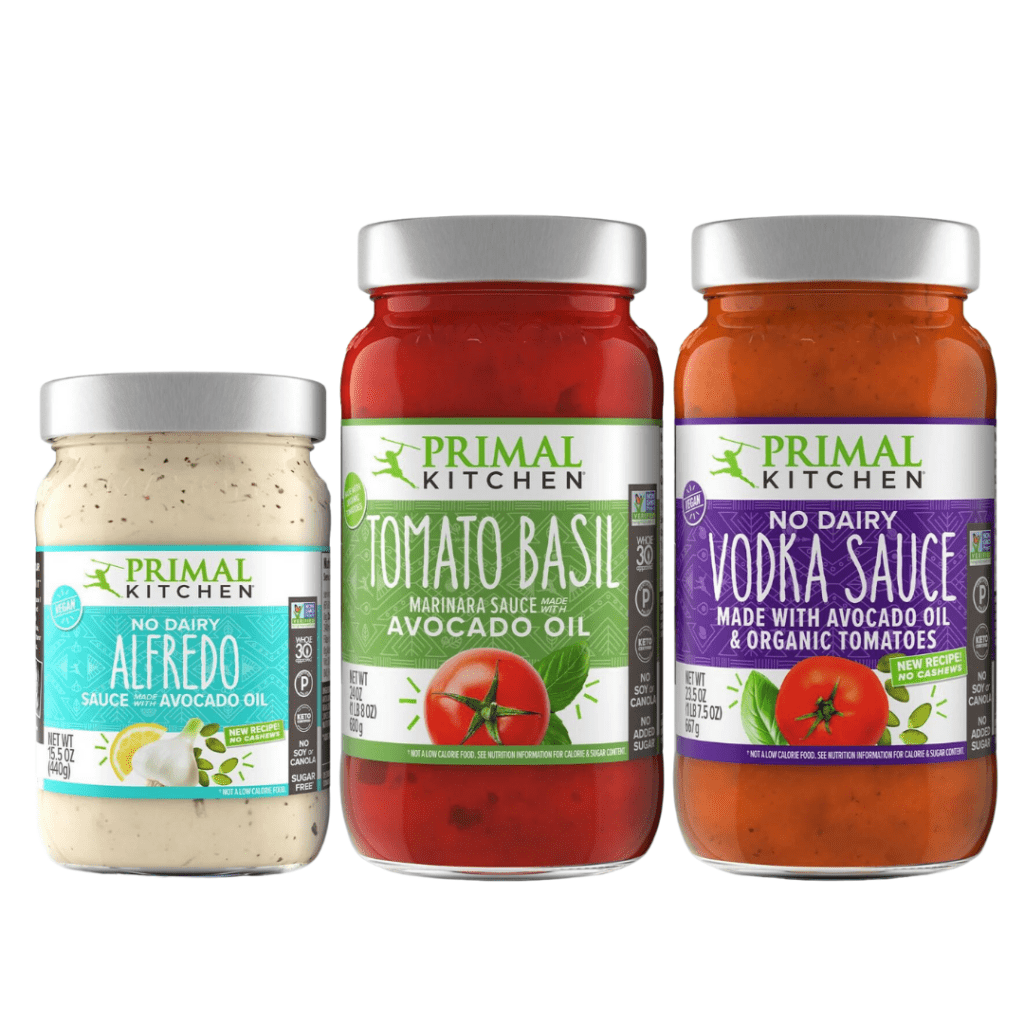
Building a balanced baby plate
Offering a balanced baby plate at each meal is beneficial for making mealtimes more nutritious and flavorful, and it helps shape your baby’s taste buds early! Exposures to a wide variety of flavors can help them grow into an adventurous and curious eater in the future.
Pasta is the perfect fit for creating a balanced baby plate. It’s a high-energy food with lots of calories to offer making it beneficial for your growing baby. Other high-calorie options include starchy foods like grains, starchy vegetables, and foods high in healthy fats.
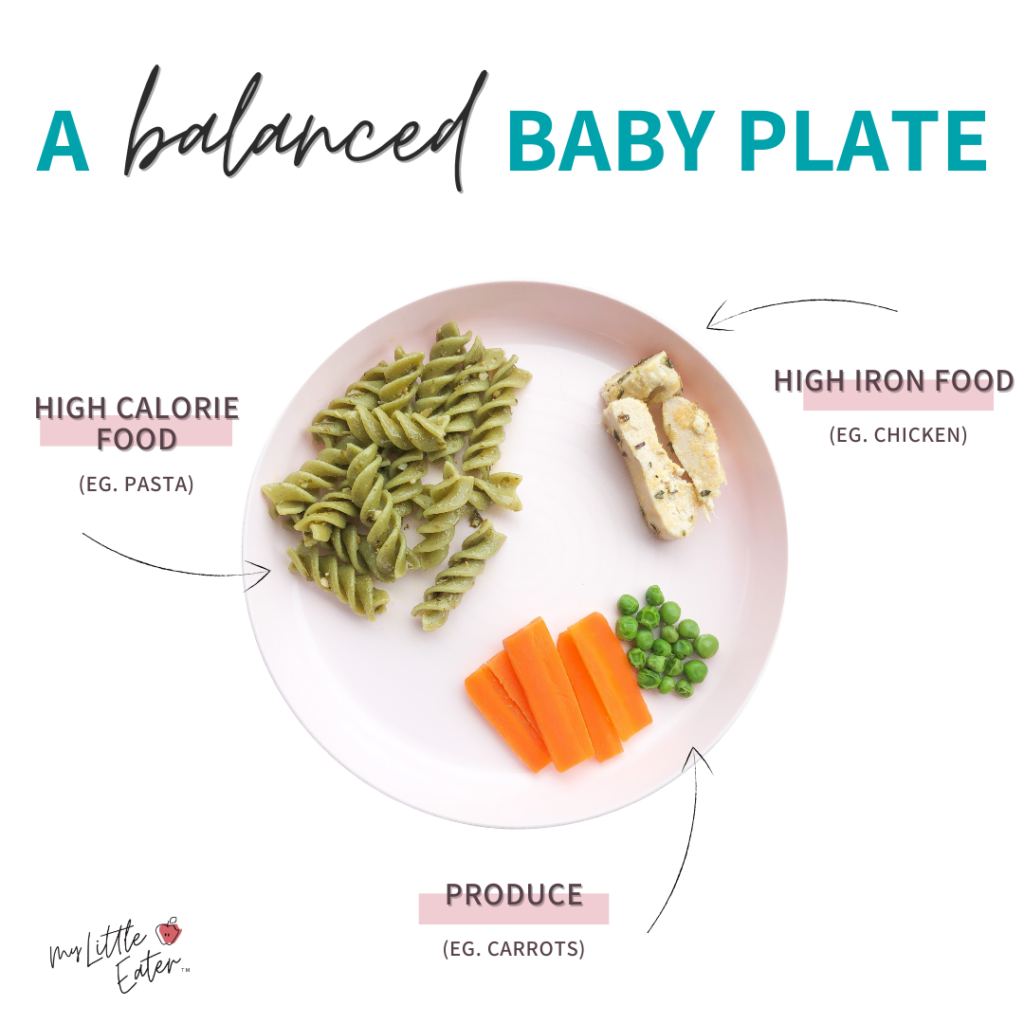
A balanced baby plate should also include a high-iron food from an animal source like meat, poultry, and seafood or a plant-based source like beans, eggs, and tofu.
Last but not least, add produce to your baby’s plate to ensure continued exposure at every meal. It can also provide a source of vitamin C which helps the body absorb iron from plant-based foods. Any fruit or veggie you can think of goes here!
Easily modified for babies
Pasta is extremely versatile and can be made into so many different dishes the whole family will enjoy! For the most part, you want your baby to be eating the same meals as the rest of the family, which will be beneficial for exposing them to a wide variety of essential nutrients, textures, and flavors.
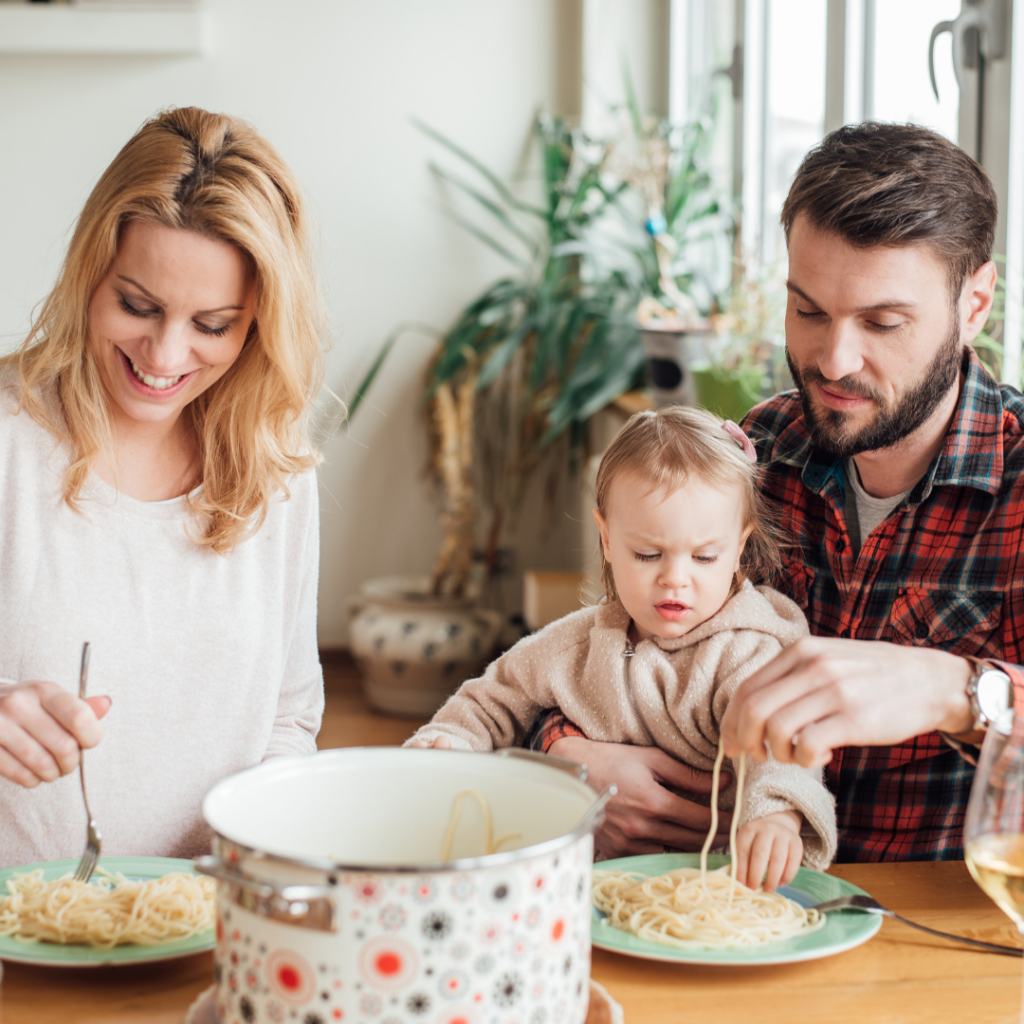
Including your baby in family meals gives them lots of opportunities to mimic you, which will actually help them learn how to eat! Not to mention making one meal for the whole family is much easier and way less time-consuming than making separate meals for you and baby.
Refer to the “how to serve” section above for modifications to pasta noodles that are required for safety or to make them easier for your baby to eat. Learn more on how to modify other family meals safely to make them baby led weaning friendly.
Healthiest pasta options for baby
No matter which type of pasta noodles you choose, they will provide an abundance of carbohydrates, which convert to energy for your baby’s rapidly growing body.
Different varieties of pasta offer unique combinations of nutrients. For instance, legume-based pasta (chickpea, lentil, and bean-based pasta) tends to be more nutrient-dense and contains higher amounts of protein, iron, and fiber compared to pasta made from wheat or rice flour. The texture of lentil or bean-based pasta will be slightly more gummy when cooked fully, but still soft and safe for baby.
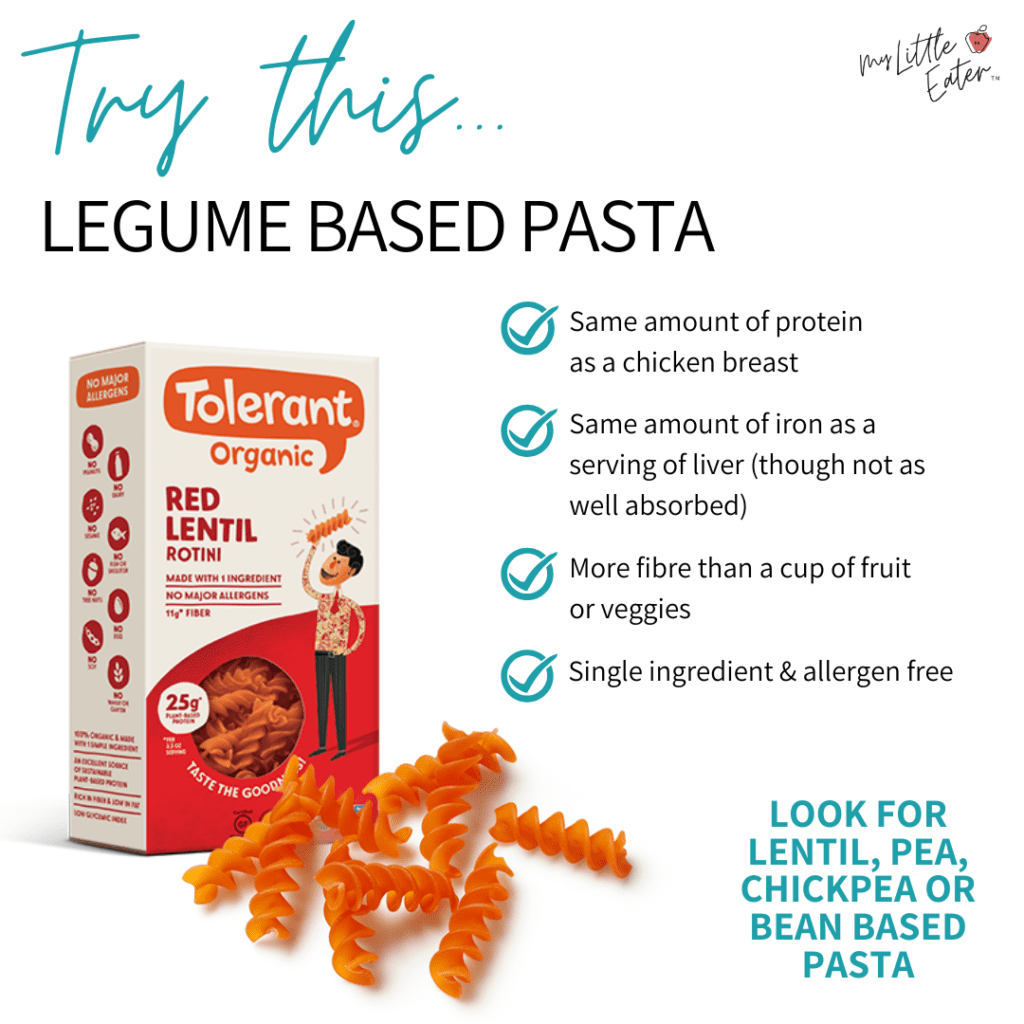
White pasta vs whole wheat
You can offer any type of pasta noodles to your baby… egg or rice noodles, edamame pasta, veggie pasta, chickpea pasta, etc. They’re all great options to offer your baby! But, when buying traditional pasta noodles, you’ll typically be choosing between white or whole wheat.
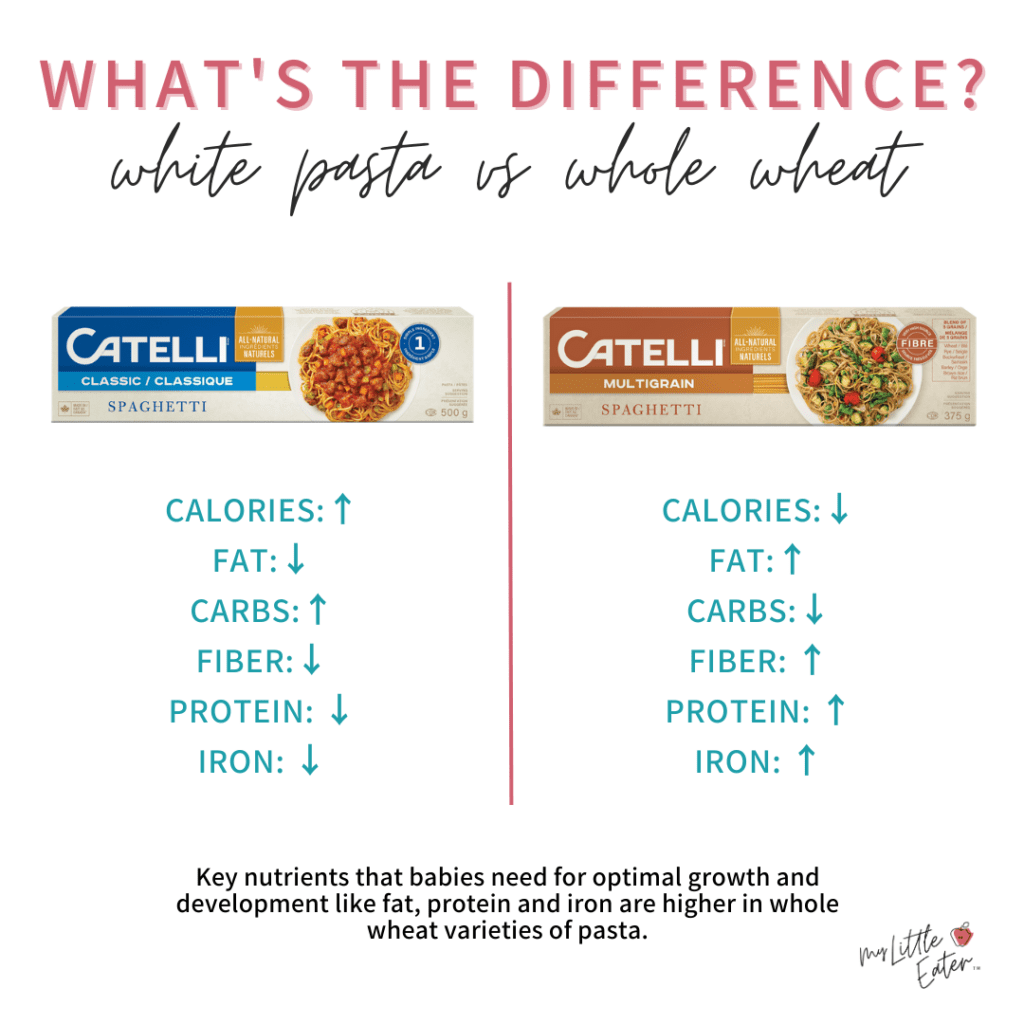
The pasta aisle of any grocery store can be pretty overwhelming when you’re trying to figure out the most nutritious option, so let’s keep it simple! Whole wheat or multigrain varieties of pasta are the more nutrient-dense pasta options when compared to white pasta varieties. They offer more fat, fiber, protein, and iron – all nutrients that are beneficial for a growing baby!
Nutritional comparison of different types of pasta
When comparing the nutrient profiles of the various pasta noodle options available on the market to the most common “regular” pasta noodles made from wheat, you will see many variations in what each has to offer!
Don’t forget to screenshot the image below for your next trip to the grocery store, pin it to save for later, or click it to download it immediately and save to your device!
Pasta brands used for nutrient comparison
- White pasta = Catelli classic
- Whole wheat pasta = Catelli whole grain
- Veggie pasta = Catelli super greens
- Chickpea pasta = Chickapea (organic spirals)
- Lentil pasta = Tolerant organic red lentil penne
- Black bean pasta = Explore cuisine organic spaghetti
- Edamame pasta = Explore cuisine organic edamame spaghetti
- Rice & Quinoa Pasta = GoGo Quinoa
- Rice noodles = Blue dragon
- Egg noodles = Blue dragon
If you’re looking for the most nutrient-dense pasta option for your baby, some of the best options are edamame-based and bean-based pasta noodles for added protein, iron, and fiber, as mentioned above. These pasta noodles typically run at a higher price point, so if you’re looking for something more budget-friendly, choosing an egg noodle or whole wheat pasta is also a really great choice!
Low-sodium pesto recipe
As mentioned above, pesto is a great option for a tasty sauce when serving pasta noodles to baby, but it’s typically high in sodium (especially when store-bought). So here is our favorite – and super simple – low-sodium pesto recipe which is perfect to serve to your baby!
Keep in mind that pesto contains pine nuts, another top allergen. If your baby hasn’t been introduced to those before, make sure you aren’t using pasta with other top allergens they haven’t had before either. Learn more about how to introduce highly allergenic foods following the most up-to-date protocols.
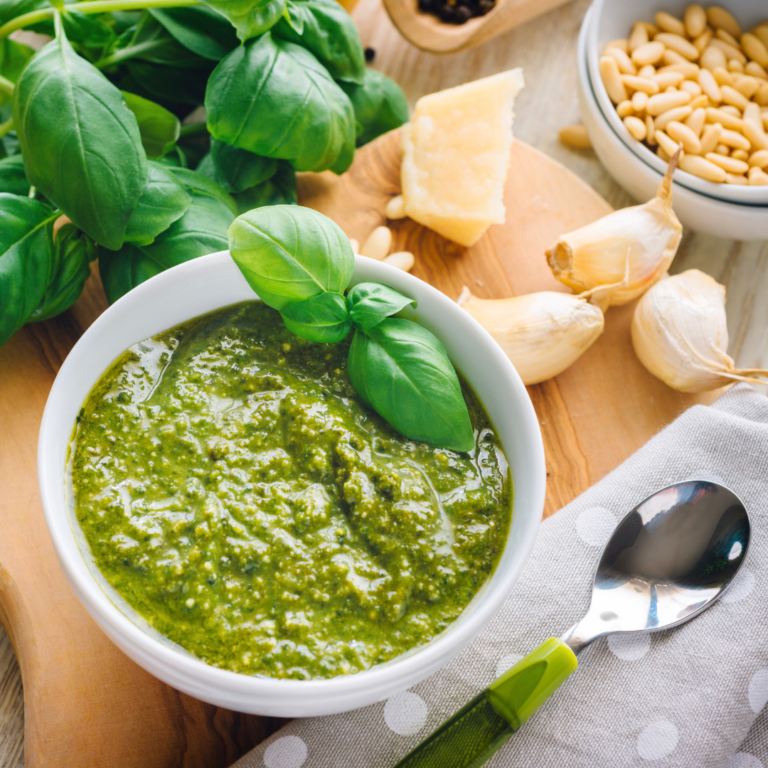
Easy Low-Sodium Pesto
Equipment
Ingredients
- 2 cups basil leaves
- ¼ cup pine nuts
- 2 garlic cloves
- ½ cup extra-virgin olive oil
- ¼ tsp salt
Instructions
- In a food processor, combine the basil, garlic, pine nuts, and salt. Pulse until smooth.
- While the food processor is running, slowly drizzle in the oil until fully incorporated. Enjoy!
Notes
Other baby-friendly pasta recipes
Want more recipes that are family-friendly AND baby led weaning friendly? Check out our 60 Day Baby Led Feeding Meal Plan – you’ll get access to over 80 recipes that are perfect for starting solids, and that the whole family can enjoy.
This isn’t just a regular meal plan with a list of recipes, you’ll actually be able to follow along with the plan to strategically introduce allergens, advance your baby in textures, and ensure all nutrient needs are being met.

In the meal plan, you’ll get lots of great pasta recipes for baby led feeding like…
- Spaghetti with beef sauce & tomato
- Peanut pasta noodles with cucumber & carrot
- Slow cooker turkey Swedish meatballs with noodles
- And more!
Love it? Pin it to save for later!

References:
- https://www.thespruceeats.com/cook-pasta-perfectly-every-time-2014713
- Harris, G., Mason, S. Are There Sensitive Periods for Food Acceptance in Infancy? Curr Nutr Rep 6, 190–196, 2017. https://doi.org/10.1007/s13668-017-0203-0

CHELSEY LANDRY, RD
Community Dietitian at My Little Eater Inc., and bunny-mom to Hickory. Chelsey offers one-on-one counselling to parents of babies and toddlers that need more customized support. Learn more by booking a free discovery call with her today!

Chelsey Landry, RD
Community Dietitian at My Little Eater Inc., and bunny-mom to Hickory. Chelsey offers one-on-one counselling to parents of babies and toddlers that need more customized support. Learn more by booking a free discovery call with her today!










